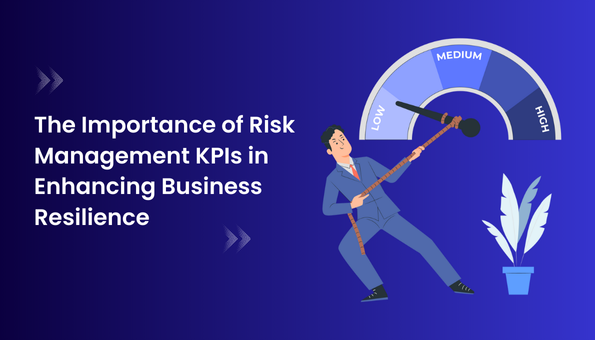Why the Importance of Risk Management Cannot Be Neglected in Today’s Modern Economy
Why the Importance of Risk Management Cannot Be Neglected in Today’s Modern Economy
Blog Article
Checking out the Importance of Risk Management for Effective Decision-Making Techniques
In the elaborate globe of business, Risk Management emerges as a critical aspect in the decision-making procedure. The capacity to recognize potential dangers and possibilities, and plan as necessary, can spell the difference in between success and failure.
Recognizing the Concept of Risk Management
Risk Management, a critical element in decision-making, is often misconstrued or oversimplified. Risk Management involves structured and self-displined methods, utilizing information and informative evaluations. From financial unpredictabilities, legal liabilities, calculated Management mistakes, to crashes and all-natural disasters, it resolves various threats - importance of risk management.
The Function of Risk Management in Decision-Making Processes
In the world of tactical preparation and service operations, Risk Management plays an essential duty in decision-making processes. It helps in determining possible risks and unpredictabilities that could impact the success of business goals. By mapping these risks, firms can formulate methods to alleviate their influence, making certain company connection and stability. Risk Management hence becomes an essential device in decision-making, assisting leaders to make enlightened options based upon an extensive understanding of the threats involved. It encourages a proactive technique, enabling organizations to prepare and expect for feasible future scenarios. This substantially lowers the probability of negative repercussions, promoting more efficient and effective decision-making approaches. Therefore, Risk Management acts as a crucial component in the decision-making procedures of any kind of company.

How Risk Management Boosts Strategic Preparation
In the context of tactical planning, Risk Management plays a crucial function. Initiating with the recognition of prospective threats, it additionally encompasses the execution of Risk mitigation steps. The role of Risk Management is dynamic yet not static, as it requires continuous monitoring and adjusting of strategies.
Identifying Possible Risks

Applying Risk Reduction
Having actually developed the value of recognizing potential threats, the next step is to discover Risk reduction. This process entails creating and implementing strategies to handle determined risks efficiently. It is a crucial facet of critical preparation as it boosts decision-making by lessening prospective negative outcomes. Risk reduction techniques can range from Risk evasion, Risk transfer, to risk reduction. Each method must be tailored to the specific Risk, considering its prospective impact and the company's Risk tolerance. Efficient Risk reduction requires a deep understanding of the Risk landscape and the prospective impact of each Risk. This understanding allows organizations to prioritize threats and designate sources efficiently, making sure that the most significant hazards are addressed first.
Tracking and Adjusting Strategies
Though Risk reduction is an essential action in Recommended Reading calculated planning, constant monitoring and modification of these strategies is just as important. This continuous procedure allows companies to identify brand-new threats and reassess existing ones, making sure the executed approaches stay reliable in the ever-changing business atmosphere. It additionally offers a possibility to examine the success of the Risk Management procedures, permitting adjustments to be made where required, additional boosting critical preparation. Efficient monitoring and modification need making use of analytics and vital efficiency indicators (KPIs) to gauge efficiency. These devices offer important data-driven insights that can notify strategic decision-making. Monitoring and readjusting Risk Management strategies is a vital element for improving an organization's strength and critical planning.
Case Studies: Effective Risk Management and Decision-Making
In the world of company and finance, effective Risk Management and decision-making commonly offer as the pillars of flourishing enterprises. These instances highlight the worth of sharp Risk Management in decision-making processes. These instances emphasize the important function of Risk Management in calculated decision-making.
Devices and Techniques for Reliable Risk Management
Browsing the intricate puzzle of Risk Management calls for the best set of tools and strategies. These tools, such as Risk registers and heat maps, aid in recognizing and assessing possible dangers. Methods consist of both measurable approaches, like sensitivity analysis, and qualitative approaches, such as SWOT analysis. These help in focusing on threats based upon their potential impact and possibility. Risk response methods, a crucial part of Risk see here now Management, entail accepting, preventing, transferring, or mitigating threats. Tracking and regulating dangers, through routine audits and reviews, make certain that the techniques continue to be reliable. With these devices and strategies, decision-makers can browse the complicated landscape of Risk Management, thereby helping with notified and effective decision-making.
Future Patterns in Risk Management and Decision-Making Techniques
As we check out the substantial landscape of Risk Management, it becomes apparent that the tools and techniques used today will continue to evolve. The principle of Risk society, where every participant of an organization is mindful and included in Risk Management, will gain a lot more prestige. These fads proclaim a more inclusive and proactive method in the direction of Risk Management and decision-making.
Conclusion

Risk Management hence comes to be an essential device in decision-making, helping leaders see this site to make informed options based on a detailed understanding of the threats involved. Risk mitigation approaches can vary from Risk avoidance, Risk transfer, to take the chance of reduction (importance of risk management). Effective Risk mitigation requires a deep understanding of the Risk landscape and the potential impact of each Risk. Risk reaction methods, an essential part of Risk Management, include approving, avoiding, moving, or mitigating dangers. The concept of Risk society, where every member of a company is mindful and entailed in Risk Management, will certainly gain a lot more prestige
Report this page